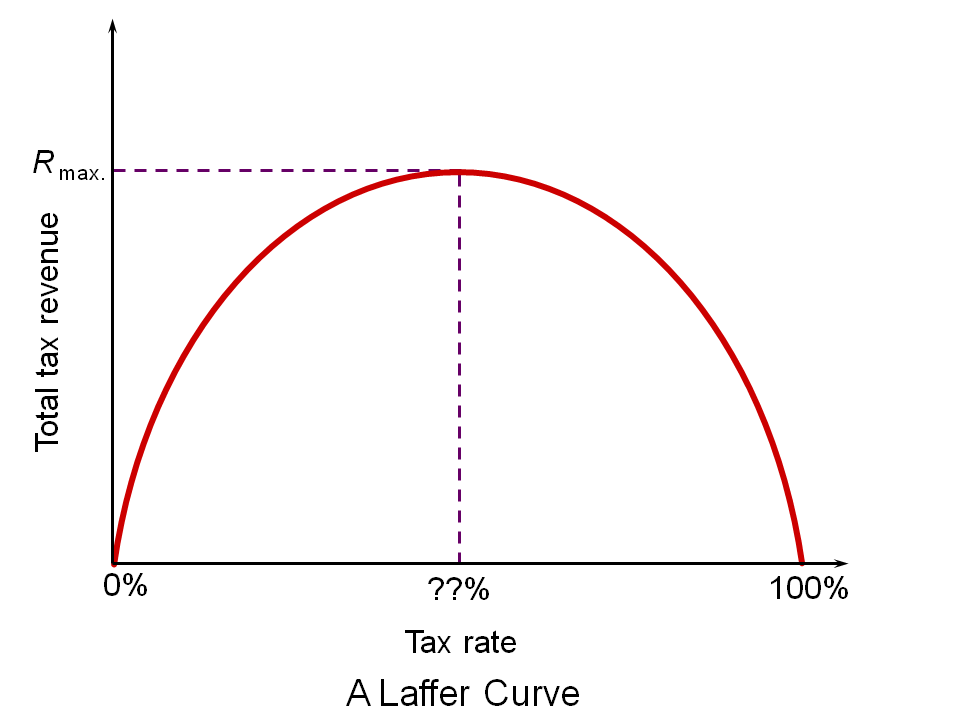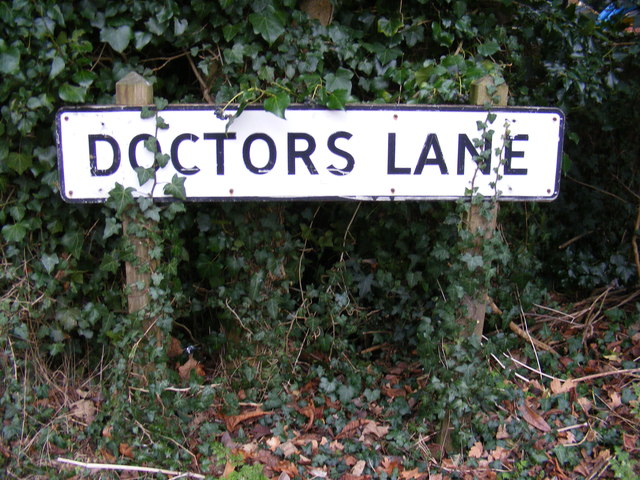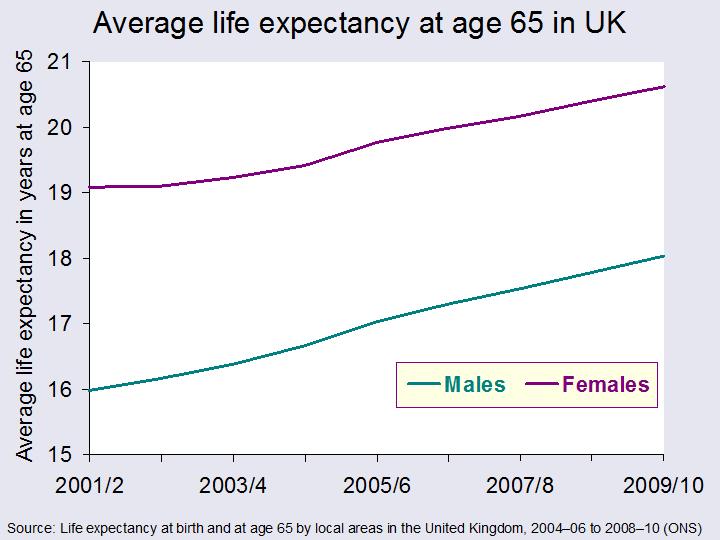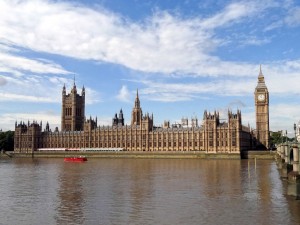 Recently there have been calls from business leaders and Conservative politicians to scrap the UK’s 50% income tax rate, which is paid on taxable incomes over £150,000. The 50% income tax rate is thus paid by top earners, who comprise around just 1% of taxpayers.
Recently there have been calls from business leaders and Conservative politicians to scrap the UK’s 50% income tax rate, which is paid on taxable incomes over £150,000. The 50% income tax rate is thus paid by top earners, who comprise around just 1% of taxpayers.
And yet the government receives about 30% of income tax revenue from this 1% – and this was before the introduction of the 50% rate in April 2010. (In fact, with the marginal national insurance rate of 2%, top earners are paying an effective marginal rate of 52%.)
One argument used by those who favour reducing the 50% rate is that the rich would pay more income tax, not less. There are four reasons given for this. The first is that people would be encouraged to work harder and/or seek promotion if they knew they would keep more of any rise in income. The second is that fewer rich people would be encouraged to leave the country or to relocate their businesses abroad. The third is that more people would be encouraged to work in or set up businesses in the UK. The fourth is that there would be less temptation to evade taxes by not declaring all income earned or to find clever ways of avoiding tax.
These arguments were put forward in the 1980s by Art Laffer, an adviser to President Reagan. His famous ‘Laffer curve’ (see Economics (8th edition) Box 10.3 or Economics (7th edition) Box 10.4) illustrated that tax revenues are maximised at a particular tax rate. The idea behind the Laffer curve is very simple. At a tax rate of 0%, tax revenue will be zero – but so too at a rate of 100%, since no-one would work if they had to pay all their income in taxes. As the tax rate rises from 0%, so tax revenue would rise. And so too, as the tax rate falls from 100%, the tax rate would rise. It follows that there will be some tax rate between 0% and 100% that maximises tax revenue.
Those arguing that a cut in the top rate of income tax would increase tax revenue are arguing that the 50% rate is beyond the peak of the Laffer curve. But this is an empirical issue. In other words, to assess the argument you would need to look at the evidence as, theoretically, the peak of the Laffer curve could be below or above 50%. Indeed, some argue that the peak is more likely to be at around 75%.
The following podcasts and articles consider the arguments. As you will see, the authors are not all agreed! Consider carefully their arguments and try to identify any flaws in their analysis.
Update
On 27 June 2012, Arthur Laffer appeared on the BBC Today Programme to discuss the Laffer curve and its implications for UK income tax policy. You can hear it from the link below
Podcasts
 Should the 50p tax rate be ditched? BBC Today Programme, John Redwood and Paul Johnson (3/3/12)
Should the 50p tax rate be ditched? BBC Today Programme, John Redwood and Paul Johnson (3/3/12)
 Arthur Laffer: Tax rate should ‘provide for growth’ BBC Today Programme (27/6/12)
Arthur Laffer: Tax rate should ‘provide for growth’ BBC Today Programme (27/6/12)
Articles
Where’s the High Point on the Laffer Curve? And Where Are We? Business Insider, Angry bear Blog (3/3/12)
Tax cuts: we can have our cake and eat it The Telegraph, Ruth Porter (22/2/12)
‘Scrap the 50p tax rate’ say 500 UK entrepreneurs Management Today, Rebecca Burn-Callander (1/3/12)
The Laffer Curve Appears in the UK Forbes, Tim Worstall (22/2/12)
Memo to 50p tax trashers: Laffer Curve peaks at over 75 per cent Left Foot Forward, Alex Hern (1/3/12)
Questions
- Explain how a cut in income tax could lead to an increase in tax revenue.
- Distinguish between the income effect and the substitution effect of a tax cut. Which would have to be bigger if a tax cut were to increase tax revenue?
- If, in a given year, the top rate of tax were raised and tax revenue fell, would this prove that the economy was now past the peak of the Laffer curve?
- What would cause the Laffer curve to shift/change shape? To what extent could the government affect the shape of the Laffer curve?
- If the government retains the 50% top tax rate, what can it do to increase the revenue earned from people paying the top rate?
- What other objectives might the government have for having a high marginal income tax rate on top earners?
- Investigate the marginal income tax and national insurance (social protection) rates in other countries. How progressive are UK income taxes compared with those in other countries?
 The pensions crisis is one area of social policy that has been the focus of attention for some years. With an ageing population, more people entering higher education and a rather substantial deficit facing the government, pension reform has been high on the agenda and not just in the UK.
The pensions crisis is one area of social policy that has been the focus of attention for some years. With an ageing population, more people entering higher education and a rather substantial deficit facing the government, pension reform has been high on the agenda and not just in the UK.
A number of factors have contributed towards the so-called pensions crisis: rising life expectancy; the ‘baby-boomers’ retiring; more people staying in education for longer; an ageing population. All of these have led to a dependency ratio that is becoming worse – fewer workers to support every pensioner. Over the past few years, strikes have taken place in protest to government pension plans, especially for public sector workers, who see the proposals as making them worse off once they retire. Doctors are the latest group to strike in protest over having to work longer before retiring and having to pay higher national insurance contributions.
So, are the doctors justified in their protests? They are currently on a final-salary pension scheme, which is a very generous scheme, although it is being phased out and replaced with a career average scheme, which will have big implications for doctors’ pensions. Furthermore, there was an overhaul of their pensions in 2008, thus the criticism that further changes are now being made to make them even worse off. Doctors do pay higher national insurance contributions than other occupations, such as teachers and they will naturally receive a higher pension than other NHS workers, such as nurses simply because they earn more. However, this does have big implications for their future.
 Inequality is a big issue across the UK and this doesn’t only refer to income. Those earning higher salaries are more likely to live longer than the average worker. So, we see life expectancy inequality as well. The consequence of this is that once an individual retires at say 60, if your life expectancy is 85, then you have 25 years to live in retirement receiving whatever pension you have accumulated throughout your working life. If, however, your life expectancy is only 75, perhaps because of your background, your occupation, your health, then you will only spend 15 years in retirement. The person that lives longer therefore receives significantly more in pension payments and if this differing life expectancy is related to your occupation and thus your salary, then inequality of income clearly has some very wide implications for pension schemes and rates of contribution.
Inequality is a big issue across the UK and this doesn’t only refer to income. Those earning higher salaries are more likely to live longer than the average worker. So, we see life expectancy inequality as well. The consequence of this is that once an individual retires at say 60, if your life expectancy is 85, then you have 25 years to live in retirement receiving whatever pension you have accumulated throughout your working life. If, however, your life expectancy is only 75, perhaps because of your background, your occupation, your health, then you will only spend 15 years in retirement. The person that lives longer therefore receives significantly more in pension payments and if this differing life expectancy is related to your occupation and thus your salary, then inequality of income clearly has some very wide implications for pension schemes and rates of contribution.
There are, of course, wider effects of any industrial action by doctors. Whilst some may agree with their view that this further pension reform is unfair, if any strike action does take place there will be wider economic effects. Those in need of treatment may have to delay it and if that means more people taking sick days, then the economic cost to the economy could be significant. The following articles consider the latest controversy in public-sector pensions.
Report
Independent Public Service Pensions Commission Final Report HM Treasury, Pensions Commission March 2011
Articles
Doctors’ strike: how the cost of NHS pensions soared Telegraph, Matthew Holehouset (21/6/12)
Are doctors’ pensions too generous Guardian, Hillary Osborne and Jill Insley (21/6/12)
 Lansley: ‘Doctors’ pension scheme is generous’ BBC News (21/6/12)
Lansley: ‘Doctors’ pension scheme is generous’ BBC News (21/6/12)
Doctors get a nasty taste of Gordon Brown’s pension medicine Telegraph, Philip Johnston (18/6/12)
Doctors wrong on pensions, says Hutton Financial Times, Sarah Neville and Norma Cohen (19/6/12)
 BMA ‘Inherent unfairness’ in doctor pensions BBC Radio 4 Today (21/6/12)
BMA ‘Inherent unfairness’ in doctor pensions BBC Radio 4 Today (21/6/12)
Reluctant move against intransigent government Scotsman, Dr Brian Keighley (21/6/12)
Will you be affected by the doctors’ strikes? BBC News (15/6/12)
Questions
- Explain the main factors that are contributing towards the so-called pensions crisis. In each case, is it a demand-side or supply-side issue?
- What are the main proposals to tackling the pensions crisis (not just for Doctors)?
- What is the difference between a career average and a final salary pension scheme? Which is better for (a) those on a higher salary at the end of their career and (b) those who are on a relatively lower salary at the end of their career? Make sure you explain your thinking!!
- What are the arguments both for and against this new round of pension reforms for doctors? Do you think the doctors are justified in taking strike action?
- What are the wider implications of industrial action? Think about the effect on individuals and on the economic performance of the wider economy.
- To what extent is it equitable that public sector workers should pay more in contributions and retire at the same age as the state pension age?
- How might higher contributions affect the incentive to work? What could we see happen to labour supply? Think about both income and substitution effects.
 In the second part of this blog, we look at an interview with the Guardian given by Robert Chote, Chair of the UK’s Office of Budget Responsibility. Like Mervyn King’s, that we looked at in Part 1, Robert Chote’s predictions are also gloomy.
In the second part of this blog, we look at an interview with the Guardian given by Robert Chote, Chair of the UK’s Office of Budget Responsibility. Like Mervyn King’s, that we looked at in Part 1, Robert Chote’s predictions are also gloomy.
In particular, he argues that if Greece leaves the euro, the effects on the UK economy could be significant, not just in the short term, but in the long term too.
The concern is that you end up with an outcome in the eurozone that creates the same sort of structural difficulties in the financial system and in the economy that we saw in the past recession, and that that has consequences both for hitting economic activity in the economy, but also its underlying potential. And it’s the latter which has particular difficulties for the fiscal position, because it means not just that the economy weakens and then strengthens again – ie, it goes into a hole and comes out – but that you go down and you never quite get back up to where you started. And that has more lingering, long-term consequences for the public finances.
The interview looked not just at the effects of the current crisis in the eurozone on the eurozone, British and world economies, but also at a number of other issues, including: the reliability of forecasts and those of the OBR in particular; relations between the OBR and the Treasury; allowing the OBR to cost opposition policies; the economic effect of cutting the 50p top rate of income tax; the sustainability of public-sector pensions; and tax increases or spending cuts in the long term.
In Part 3 we look at attempts by the G8 countries to find a solution to the mounting crisis.
Articles
Robert Chote interview: ‘I would not say in the past there’s been rigging’ Guardian, Andrew Sparrow (18/5/12)
UK ‘may never fully recover’ if Greece exits euro Guardian, Andrew Sparrow, Helena Smith and Larry Elliott (18/5/12)
British economy may ‘never quite recover’ from a severe Euro collapse The Telegraph, Rowena Mason (18/5/12)
OBR report
Economic and fiscal outlook Office for Budget Responsibility (March 2012)
Questions
- Why is it very difficult to forecast the effects of a Greek withdrawal from the euro?
- Why may Greek withdrawal have an effect on long-term potential output in the UK and the rest of Europe?
- Why are economic forecasts in general so unreliable? Does this mean that we should abandon economic forecasting?
- Why are public finances “likely to come under pressure over the longer term”?
- Why might the cut in the top rate of income tax from 50% to 45% have little impact on economic growth? Distinguish between income and substitution effects of the tax cut.
 According to the Sunday Times Rich List, the combined wealth of Britain’s 1000 richest people grew by nearly 4.7% last year to £414 billion (after growing by 18% in 2010).
According to the Sunday Times Rich List, the combined wealth of Britain’s 1000 richest people grew by nearly 4.7% last year to £414 billion (after growing by 18% in 2010).
This is in stark contrast to average households, who saw their real incomes decline by 1.9% in 2011. As the Guardian article below says:
The Rich Listers are not merely the 1%, but the 0.01%, and this fanfared celebration of their assets feels like a celebration of things that nobody feels like celebrating: bankers’ bonuses, complex corporate tax-avoidance structures, the stifling grip of aristocratic family wealth.
So why are the rich getting richer and what are the implications for society and the economy? Watch and read the following webcasts and articles and then see if you can answer the questions below.
Webcasts
 Rich List shows how super-wealthy have dodged recession (or) Channel 4 News (29/4/12)
Rich List shows how super-wealthy have dodged recession (or) Channel 4 News (29/4/12)
 Sunday Times Rich List: Wealthy getting richer BBC News, Ben Thompson (29/4/12)
Sunday Times Rich List: Wealthy getting richer BBC News, Ben Thompson (29/4/12)
Articles
Britain’s richest see fortunes rise to record high Reuters, Tim Castle (29/4/12)
Sunday Times Rich List shows rich recover wealth twice as fast Myfinances.co.uk, Ben Salisbury (29/4/12)
Sunday Times Rich List suggests UK’s wealthiest defy recession BBC News (28/4/12)
Sunday Times Rich List 2012: Wealth of richest grows to record levels The Telegraph, Patrick Sawer (28/4/12)
The Not-So-Rich-Any-More List Guardian, Oliver Burkeman and Patrick Kingsley (27/4/12)
Sunday Times Rich List ITV News (29/4/12)
Data
Distribution of Personal Wealth HMRC
The effects of taxes and benefits on household income ONS (19/5/11)
Household Quarterly Release 2011 Q4 – Real household actual income and expenditure per head ONS
Questions
- Distinguish between stocks and flows. Which of the following are stocks and which are flows: income, wealth, savings, saving, expenditure, possessions?
- If the combined wealth of the 1000 wealthiest people increased in 2011, does this imply that their incomes rose? Explain.
- Why have the super rich got richer, while average incomes in the country have fallen?
- What are the costs and benefits to society (other than the super rich) of the super rich becoming richer?
- Distinguish between the income and substitution effects of an increase in income of the wealthy. Which is likely to be larger and why?
 On 21 March, the Chancellor of the Exchequer, George Osborne, delivered the 2012 Budget for the UK. The details of the tax and benefit changes can be found in the Budget Report, with the Treasury’s summary of the tax changes here.
On 21 March, the Chancellor of the Exchequer, George Osborne, delivered the 2012 Budget for the UK. The details of the tax and benefit changes can be found in the Budget Report, with the Treasury’s summary of the tax changes here.
One of the key elements in the Budget was the reduction in the top rate of income tax from 50% to 45% from April 2013. The Chancellor argued that the introduction of the 50% rate in 2010 had raised very little extra tax revenue. Partly this was the result of people managing their tax affairs so that they could bring forward income to the year before the 50% rate was introduced – a practice known as forestalling. People are likely to do the reverse with the latest tax change and delay receiving income until next year. For details of the effects of forestalling, see the Office for Budget Responsibility’s Economic and fiscal outlook charts and tables Box 4.2a.
But part of the reason for the 50% tax rate raising relatively little has been the effect on incentives. A rise in the top rate of income tax can encourage people to move from the country – or move their incomes; it may discourage top earners from working more; it may encourage people to engage in various tax avoidance schemes; it may encourage people to evade taxes by not declaring all their income.
The effect of a rise (or fall) in the marginal income tax rate (t) on taxable income is given by the taxable income elasticity (TIE). This is defined as the proportionate change in taxable income (Y) divided by the proportionate change in the net-of-income-tax rate (r) (where r = 100 – t: i.e. the percentage of an extra pound that is not paid in income tax, but is retained by the taxpayer for spending or saving). TEI is thus ΔY/Y ÷ Δr/r. The larger the disincentive effect of raising taxes, the more will taxable income fall and hence the higher will be the value of TIE.
The Office for Budget Responsibility (OBR) in 2010 based its calculations on a TIE of 0.35 for the rise in the top marginal rate of income tax from 40% to 50%. This means that for each 1% fall in the net-of-income-tax rate, taxable income would fall by 0.35%. With a TIE of 0.35, the OBR calculated that the new top rate would bring an extra £2.9bn per year by 2011-12 (after allowing for any temporary residual effects of forestalling). However, the OBR now believes that the TIE is significantly higher and that the 50% rate will bring only an extra £0.7bn in 2011/12.
In its analysis of the effects of a cut in the top rate from 50% to 45%, the OBR has assumed a TIE of 0.45.
Turning to the costing of the move to 45 per cent, measured against our baseline that reflects the new information on the 50 per cent yield, we have endorsed as reasonable and central the Government’s estimate that the underlying cost would be around £0.1 billion in 2013-14, based on an assumed TIE of 0.45. The figure is as low as this because a TIE of 0.45 implies that the revenue-maximising additional tax rate is around 48 per cent. Moving from just above to just below this rate would therefore have very little revenue impact. Moving the additional rate back to 40 per cent would take it further below the revenue maximising rate and would thus be more expensive at roughly an additional £600 million. But for the reasons set out above we would again emphasise the huge uncertainties here.
Economic and fiscal outlook – March 2012 (p110)
The government’s arguments for reducing the top tax rate, therefore, are that it will have little effect on tax revenue, but would have a significant effect in encouraging inward investment, discouraging emigration of high earners and encouraging high earners to work more.
Articles
Rich tax cuts offset by changes to relief Financial Times, Vanessa Houlder (21/3/12)
Budget 2012: A big debate about small numbers (cont’d) BBC News, Stephanie Flanders (21/3/12)
Budget 2012: End of 50p tax, but 45p rate here to stay The Telegraph, Robert Winnett (21/3/12)
Budget 2012: Top income tax rate ‘won’t go any lower than 45p’ This is Money, Tim Shipman (22/3/12)
Why is tax avoidance a reason for letting people off tax? New Statesman, Alex Hern (22/3/12)
Study: Millionaires Don’t Flee States Due To Tax Hikes Think Progress, Pat Garofalo (22/3/12)
Laffer Curve Fun, with a side serving of nepotism Mark Wadsworth blog (22/3/12)
Budget 2012: are we really all in this together? Guardian, Polly Curtis (21/3/12)
Did the 50p tax rate really raise less than £1 billion in 2010/11? Touch Stone, Howard Reed (22/3/12)
45p: Power beats evidence Stumbling and Mumbling, Chris Dillow (22/3/12)
Reports, documents and presentations
Economic and fiscal outlook – March 2012 OBR
Budget 2012 HM Treasury (21/3/12)
Budget 2012 IFS (March 2012)
The Exchequer effect of the 50 per cent additional rate of income tax HMRC (March 2012)
Can More Revenue be Raised by Increasing Income Tax Rates for the Very Rich? IFS, Mike Brewer and James Browne (2009)
The 50p income tax rate IFS, James Browne (March 2012)
Questions
- What are the arguments for and against reducing the top rate of income tax from 50% to 45%? Do the same arguments apply to a further reduction to 40%?
- According to the OBR, at what top tax rate is the top of the Laffer curve?
- Why are the OBR’s calculations subject to considerable possible error?
- Why might a fall in the top tax rate from 50% to 40% not exactly reverse all the effects of an earlier rise in the top tax rate from 40% to 50%? In other words, why may the effects not be symmetrical?
- Distinguish between the income and substitution effects of a change in income tax rates. Which is assumed to be larger by the OBR in the case of reducing the top rate of income tax from 50% to 45%? Explain.
 Recently there have been calls from business leaders and Conservative politicians to scrap the UK’s 50% income tax rate, which is paid on taxable incomes over £150,000. The 50% income tax rate is thus paid by top earners, who comprise around just 1% of taxpayers.
Recently there have been calls from business leaders and Conservative politicians to scrap the UK’s 50% income tax rate, which is paid on taxable incomes over £150,000. The 50% income tax rate is thus paid by top earners, who comprise around just 1% of taxpayers. Should the 50p tax rate be ditched? BBC Today Programme, John Redwood and Paul Johnson (3/3/12)
Should the 50p tax rate be ditched? BBC Today Programme, John Redwood and Paul Johnson (3/3/12) Arthur Laffer: Tax rate should ‘provide for growth’ BBC Today Programme (27/6/12)
Arthur Laffer: Tax rate should ‘provide for growth’ BBC Today Programme (27/6/12)



